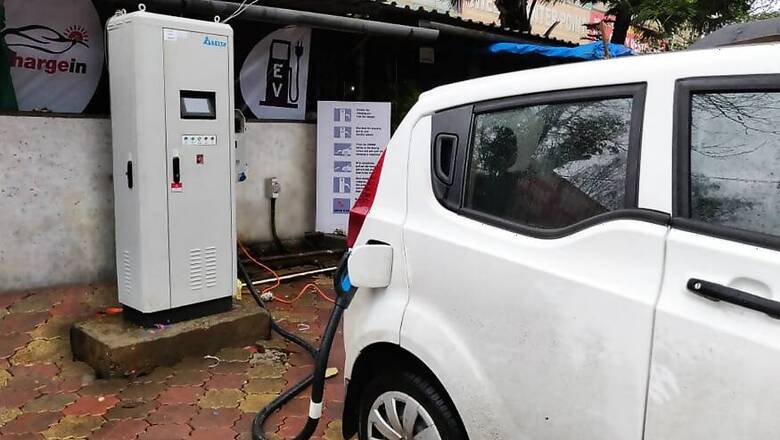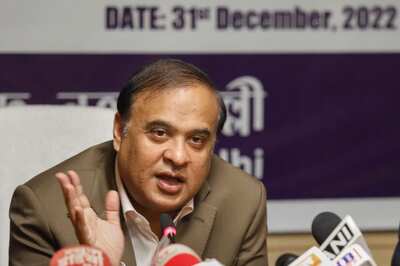
views
With the announcement of the reduction in GST from 12% to 5%, Nirmala Sitharaman, the Finance Minister of India has put the electric vehicles in focus. Not only GST, but a tax benefit on EV loans, and other efforts by the government to push the e-Mobility in India has left everyone wondering - do we have a proper EV infrastructure in place? Solving this infra problem is Magenta Power, green energy solutions provider, with 20 Years of Industry experience.
Magenta is one of the first brands to install EV Charging Stations and create EV Corridor on Mumbai - Pune Expressway and also on the route Mumbai - Bangalore. Magenta has installed India's first EV billing meter in association with Maharashtra State Electricity Board. We got in conversation with Mr. Maxson Lewis, Managing Director, Magenta to discuss on the current EV infrastructure scenario in India:
How do see EV industry in India?
The EV industry is poised for growth. The EV adoption requires an ecosystem view and lots of pieces of the puzzle are falling in place. However, some key concerns remain as far as battery technology and availability of vehicle options. But the second half of 2019 and early 2020 will see huge progress in this space
How important are external DC fast chargers on places like highways, malls, parking?
I think there is a huge brouhaha around DC fast charging. Globally up to 80% of the EV charging happens at homes and office – places where people park their cars normally and naturally. DC fast charging is for highway charging and caters to the 20% of the charging requirements. Even after 2 DC charging, it is recommended to do an AC charging for battery stabilisation and life.
EV charging needs to be understood differently and comparing that DC fast charging is equivalent to filling your tanks with Petrol/ Diesel is a wrong view. DC fast charging requires 30 mins as well. What I am trying to say is that DC fast charging is required for a different use case (fleets and highways), but the mass adoption of EV will be driven by availability of safe and simple AC charging.
How Magenta aims to push the EV scene in India?
Having said that Magenta Power is making EV charging Available, Accessible, Affordable and Automated under our network and brand called as ChargeGrid. We are trying to solve the charging challenges by providing Indian solutions to Indian challenges in EV charging
We provide the following end to end solutions and services:
-Hardware (we have chargers made in India, made for India for specific use cases – be it community charging or for individual charging. Be it malls, housing complex all who are looking for charging solutions can talk to us.
-Our charging platform is made for 2W , 3W or 4W irrespective of the type and make of vehicle.
-Software – Our ChargeGrid platform is an open platform, so if you have a charger and want to provide that service to others and earn, our platform allows that. Sign up and host your charger on our network.
->Service: Our ChargeGrid network growing slowly and steadily will provide charging services to user.
Tell us about the Magenta brand as a whole and what all things you are doing in India?
Magenta Power is focused on clean energy solutions – generation, adoption and utilisation. This is manifest in our three business arms:
-We are focussed on clean energy generation using solar and bio energy
-Our utilisation is driven by our e-mobility platform under ChargeGrid
-We believe all this (generation and utilisation) is going to converge in a single platform and we are developing the energy informatics technology base for that. While this component if future oriented, we are already invested in building that platform.
Tell us about the EV corridor you have setup?
We setup the Mumbai-Pune EV highway last year in August. This is a series of DC fast and AC charging points we setup since we realised that the adoption of EV needs a system where the EV owners can move beyond their respective cities and beat the range anxiety issue. Mumbai -Pune was selected among the few we have already identified in India.
Over the last 12 months, we have collected enormous amount of data and most importantly user experience to help us go all out to other highways as well. Often it is the smaller and simpler aspects of this ecosystem that need to be addressed and not the larger issues which typically get talked about
What challenges do you face?
One of the biggest challenges has been space availability and the second has been the callous attitude of the local DisComs. We have spent enough visits over 16 months to the local offices to educate them and get the paperwork done. While a lot gets talked about at the policy level, we realised pains of getting things on the ground. Incidentally, we were the first company in India to install the EV billing meter under special tariffs.
But over last 12 months, the hype and build up probably will make things easier for us and for others who want to enter in this space.
How promising is the Indian market?
The market is yet to kick start especially in the 4W spaces. The 2W market is leading the way across the country. The 3W markets is growing in certain geographies since it is a regulated market. For example Delhi has more than 1 Lakh electric rickshaw if you think of them as an EV essentially.
The market is bound to start off in 2020 when more vehicles make their presence felt giving people better options. In the mean time, it is companies like us who are working on the enablement part of it and building the infrastructure.
As per our projections, second half of 2020 is the inflection point after which the growth of EV will be unstoppable.




















Comments
0 comment